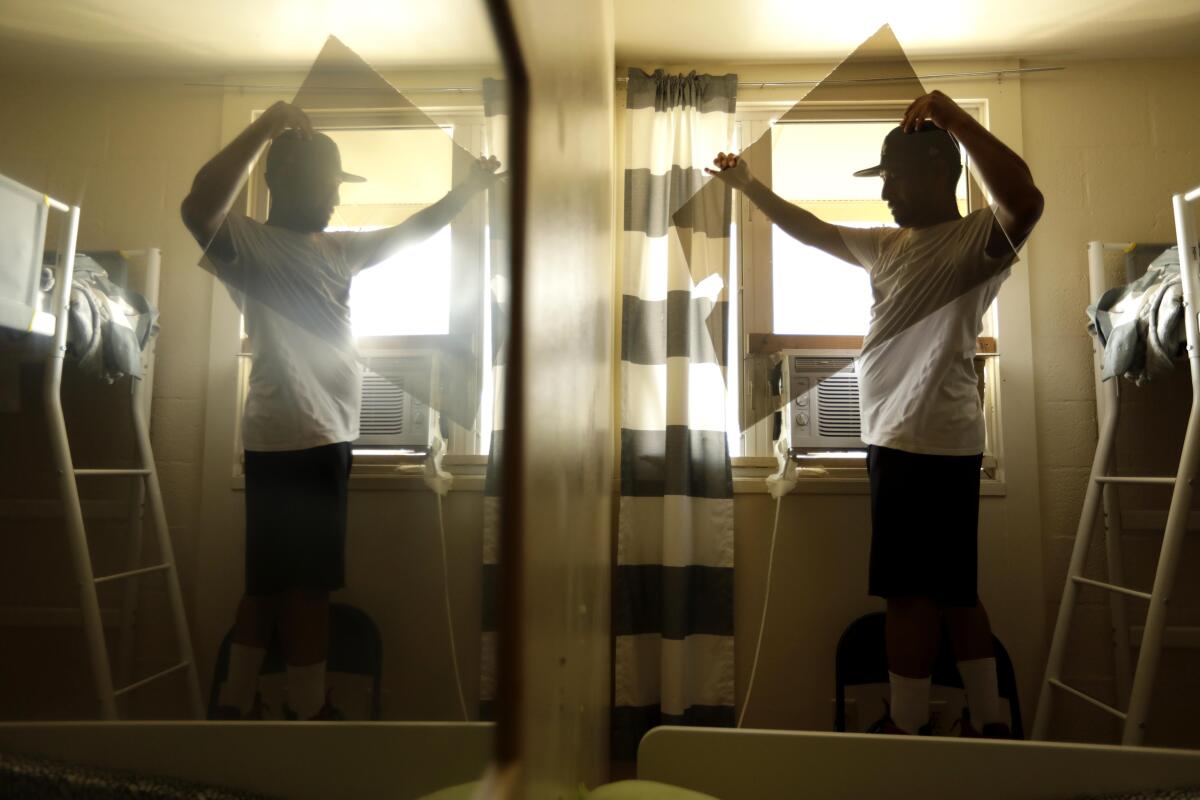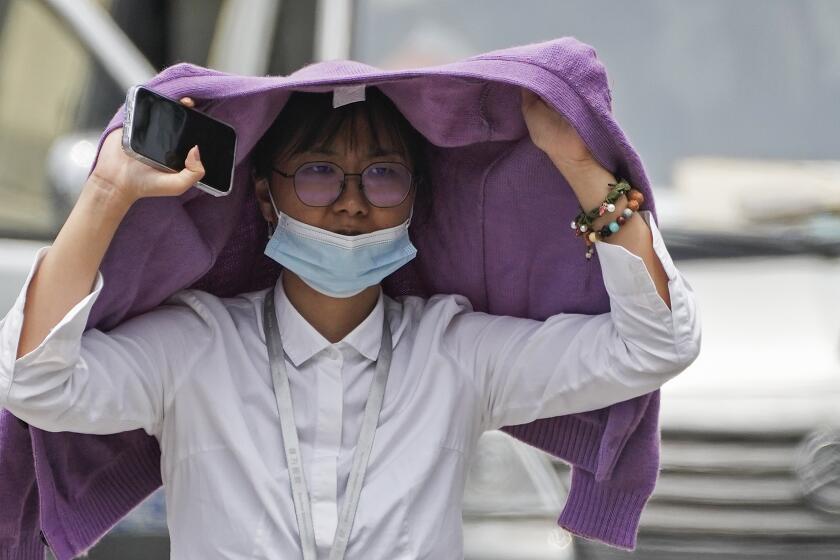Climate change is roasting L.A. The city can save lives by requiring A/C in rentals

- Share via
As another punishing heat wave sets in, it’s worth remembering that home isn’t much of a refuge for many Californians when temperatures climb.
It can be hotter inside, especially in older, poorly insulated buildings without air conditioning, than outside, increasing the risk of getting sick or dying from heat-related illness. And as climate change brings more periods of extreme heat, our homes become more hazardous too.
That poses a particular danger in places such as Los Angeles, where due to a historically mild climate many people still live without air conditioning. But the L.A. area is already two degrees warmer than it was in the 1950s, and heat waves are more frequent, severe and long-lasting. Much of L.A.’s housing was built decades ago and designed for a climate that no longer exists. Yet there is no requirement that landlords provide cooling equipment in rental units, like state law mandates for heating being able to keep indoor temperatures above 70 degrees during cold weather.
Editorial: Earth is breaking heat records. Now can world leaders get serious about climate change?
This week’s record temps are another alarm, alerting us that the window to avoid climate devastation is closing. Will humanity listen? Or just hit snooze again?
That’s dangerous and untenable. Our continued spewing of greenhouse gas pollution is fueling record temperatures globally and locally. Residents must be protected from life-threatening heat inside their homes and apartments. That’s why Los Angeles officials deserve credit for looking into requiring every rental housing unit to have some air conditioning or cooling apparatus.
This could do more than almost any other action to save lives and protect residents from extreme heat, as more than 60% of Angelenos live in rental units. It’s critical that city officials follow through and waste no time in advancing ambitious, thoughtful policies that the council can adopt to bring tangible improvements in time for next summer.
Air conditioning is no longer a nice-to-have amenity, even in coastal areas of L.A. where it was once uncommon. Climate change has made it a must-have. Extreme heat is the deadliest effect of climate change, and its death toll is chronically undercounted. Protecting people from this preventable hazard inside their own homes should be a priority for officials at all levels of government.
Temperatures continue to rise thanks to climate change. But state officials have moved glacially slow to put protections in place for people toiling during the summer at indoor workplaces like warehouses and factories.
Local rules are needed because California lawmakers have failed to act. Last year, they let a bill die that would have required regulators to establish statewide safe-temperature standards and cooling requirements for homes.
This is the second attempt to pursue rental cooling rules since a similar proposal last year by former City Council President Nury Martinez fizzled after she resigned. It’s time to move beyond dead-end proposals, studies and discussion and finally take some action. As the heat enveloping the region this week demonstrates, the climate isn’t waiting, and neither should we.
The rental housing industry opposes mandating the installation of cooling equipment, saying that city leaders have not fully considered the costs to landlords, which could include paying to upgrade wiring and electrical panels. Those improvements could run to tens of thousands of dollars per building without government assistance or passing costs through to tenants, who may also pay higher utility bills from air conditioning use. The Apartment Assn. of Greater Los Angeles is suggesting the city require only the installation of ceiling fans and exempt beach communities, while creating more public cooling centers and providing free transportation to them.
Editorial: Heat waves are killing Californians in their homes. Cooling standards could save lives
A bill in the California Legislature would save lives during extreme heat waves by requiring dwelling units to maintain adequate cooling.
That last idea notwithstanding — few people use cooling centers, and fans don’t cool air, only push it around — property owners raise some valid concerns about the costs and logistics of retrofitting large numbers of aging buildings to accommodate air conditioners and their increased energy use. But those details can be worked out through well-designed policy that does not place unrealistic burdens on landlords or tenants. The city’s cooling requirement could be tailored by geography, with tougher requirements for hotter neighborhoods or fashioned around a performance standard, such as being able to keep at least one room of the home within a specified safe temperature limit.
For now, the Los Angeles Department of Water and Power is offering rebates for customers enrolled in one of its discounted rate programs to cover 80% or more of the cost of a window, portable or wall-mounted air conditioning unit. More than 2,000 were claimed last year. That’s a good start, though the program doesn’t address the underlying problem that some landlords prevent tenants from installing air conditioning units they’ve purchased.
Meanwhile, Gov. Gavin Newsom’s administration is launching a $20 million public awareness campaign about the dangers of extreme heat, bringing some overdue attention to a lethal climate hazard that California has ignored for too long. But officials need to do much more to get window units, heat pumps and other cooling equipment into as many homes without air conditioning as possible. L.A. can show leadership by ensuring that renters can find refuge from the heat at home.
More to Read
A cure for the common opinion
Get thought-provoking perspectives with our weekly newsletter.
You may occasionally receive promotional content from the Los Angeles Times.












